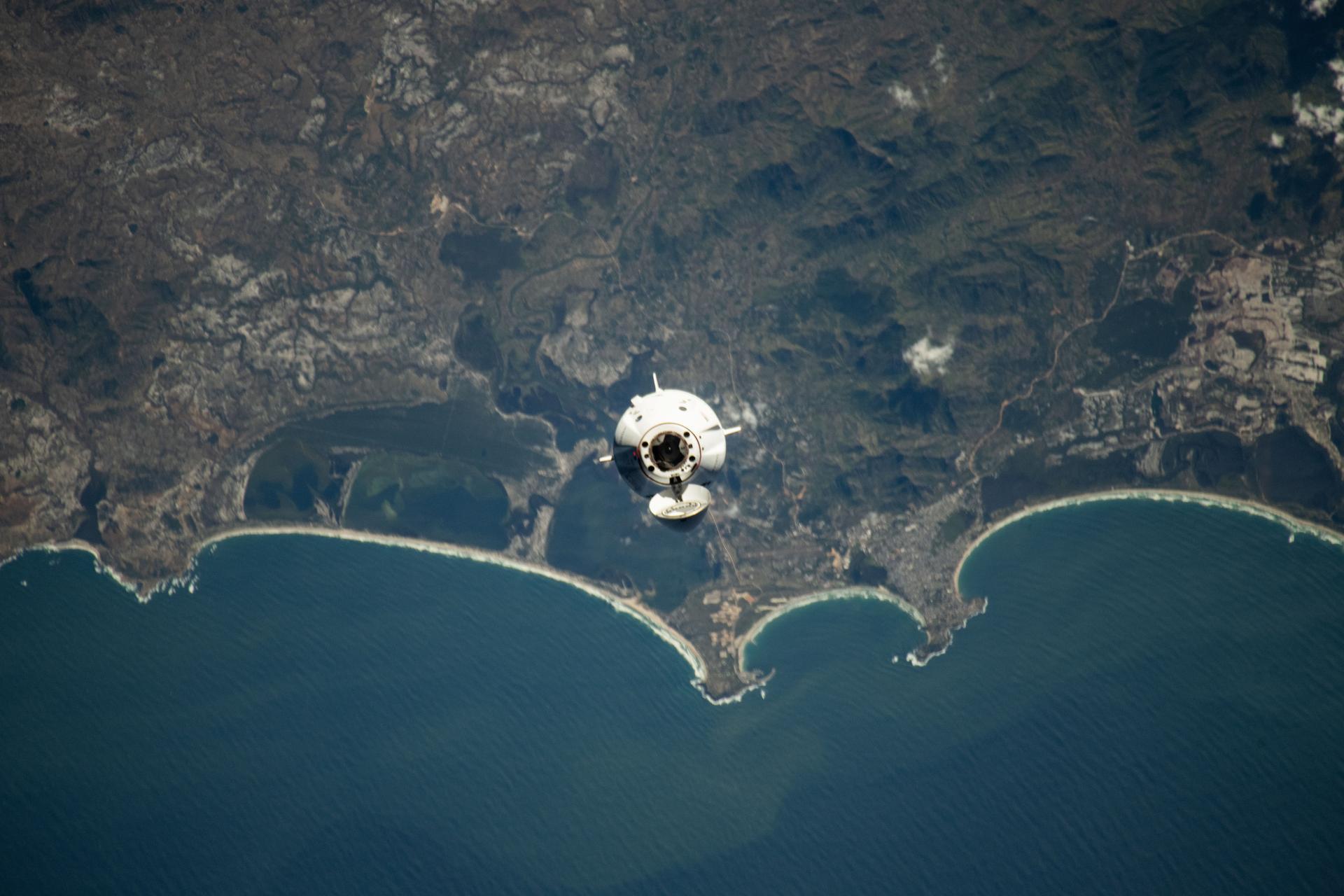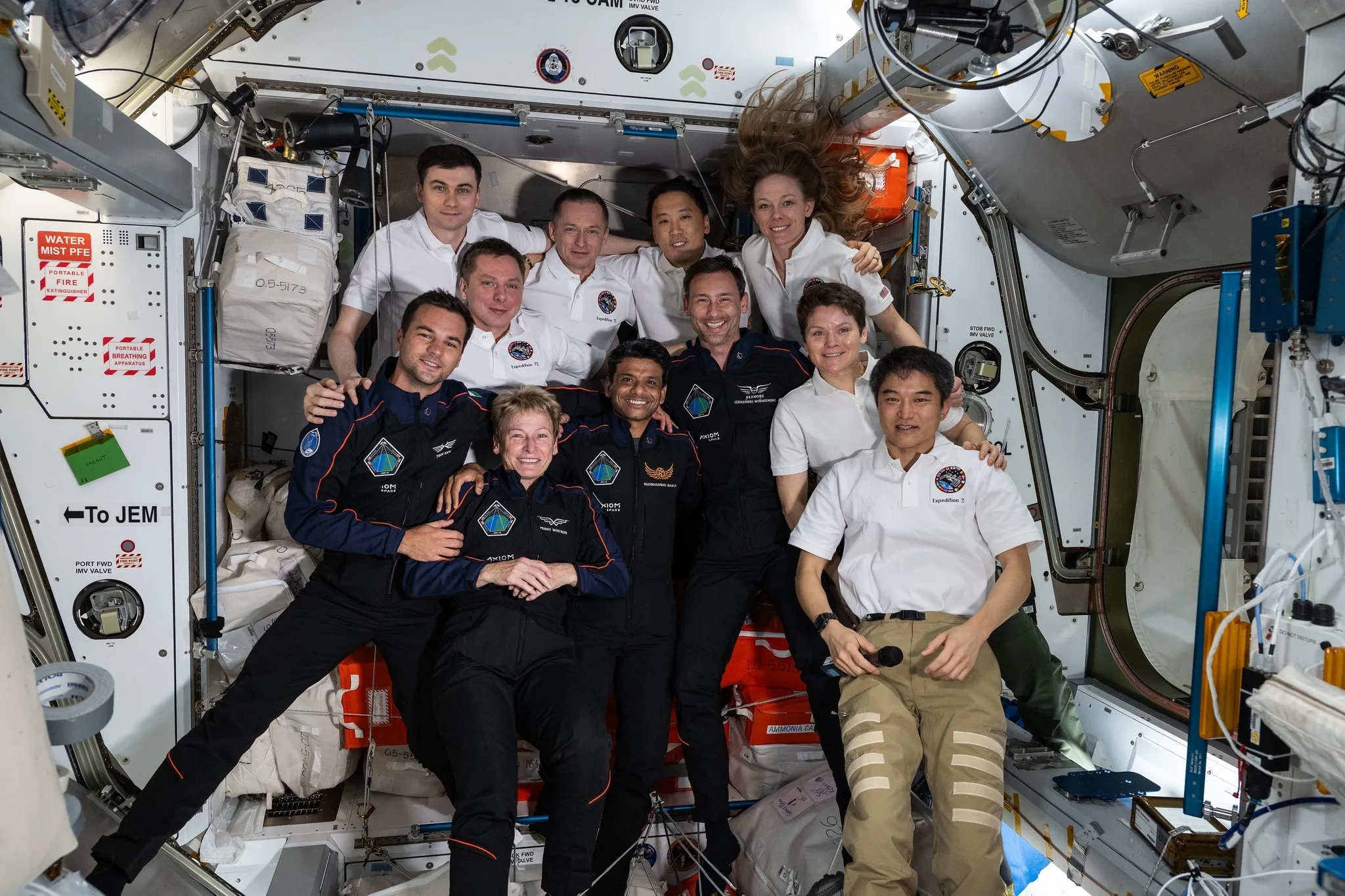13.07.2025

Mission managers have given the “go” for the Axiom Mission 4 (Ax-4) crew to board the SpaceX Dragon spacecraft and undock from the International Space Station’s space-facing port on the Harmony module at 7:05 a.m. EDT on Monday, July 14. Ax-4 Commander Peggy Whitson will lead Pilot Shubhanshu Shukla, and Mission Specialists Sławosz Uznański-Wiśniewski, and Tibor Kapu back to Earth completing a two-and-a-half-week research mission aboard the orbiting lab.
The Ax-4 private quartet had a full schedule on Friday first collecting blood samples for analysis as part of its biomedical research. Next, microalgae was studied as a food source for crews and a key part of biological life support systems on spacecraft. Nanomaterialswere also investigated as a basis for constructing wearable devices that comfortably monitor crew health.
Ax-4 will go into Saturday finalizing science experiments including an electrical muscle stimulation study, testing suit fabrics that promote thermal comfort while exercising, and filming crew activities for a behavioral health study. On Sunday, they will begin packing science gear filled with research samples and loading personal items and other cargo inside Dragon for retrieval on Earth.
Station Flight Engineer Anne McClain from NASA began helping the Ax-4 crew turn its attention to Monday’s undocking gathering hardware and other items for packing inside Dragon. McClain also continued assisting the private crewmates as they kept up their science investigations using space station resources.
NASA Flight Engineer Nichole Ayers began her day in the Columbus laboratory module also assisting the Ax-4 crew spinning the astronaut’s blood samples in a centrifuge and stowing them in a science freezer for preservation. She later worked inside the Quest airlocktransferring water in a pair of spacesuits. NASA Flight Engineer Jonny Kim assisted Ayers with the blood sample processing then spent the rest of his day inspecting electronics gear and swapping computer cables.
Station Commander Takuya Onishi of JAXA (Japan Aerospace Exploration Agency) started his day processing saliva samples for analysis then recording his sleep experience for a computer questionnaire. He later worked in the Tranquility module replacing orbital plumbing hardware before deactivating and stowing a microscope in the Kibo laboratory module.
Roscosmos Flight Engineers Sergey Ryzhikov and Alexey Zubritskiy took turns pedaling on an exercise cycle while wearing electrodes for a physical fitness evaluation. Researchers will use the data to understand the energy requirements crew members need for strenuous activities such as spacewalks. Fight Engineer Kirill Peskov replaced fire extinguishers in the Poisk, Rassvet, and Zvezda modules then checked computer hardware that supports the European robotic arm.
Quelle: NASA
+++
NASA to Provide Coverage of Axiom Mission 4 Departure from Station

NASA will provide live coverage of the undocking and departure of the Axiom Mission 4 private astronaut mission from the International Space Station.
The four-member astronaut crew is scheduled to undock from the space-facing port of the station’s Harmony module aboard the SpaceX Dragon spacecraft at approximately 7:05 a.m. EDT Monday, July 14, pending weather, to begin their return to Earth and splashdown off the coast of California.
Coverage of departure operations will begin with hatch closing at 4:30 a.m. on NASA+. Learn how to watch NASA content through a variety of platforms, including social media.
Peggy Whitson, former NASA astronaut and director of human spaceflight at Axiom Space, ISRO (Indian Space Research Organization) astronaut Shubhanshu Shukla, ESA (European Space Agency) project astronaut Sławosz Uznański-Wiśniewski of Poland, and HUNOR (Hungarian to Orbit) astronaut Tibor Kapu of Hungary, will have spent about two weeks in space at the conclusion of their mission.
The Dragon spacecraft will return with more than 580 pounds of cargo, including NASA hardware and data from over 60 experiments conducted throughout the mission.
NASA’s coverage is as follows (all times Eastern and subject to change based on real-time operations):
Monday, July 14
4:30 a.m. – Hatch closing coverage begins on NASA+.
4:55 a.m. – Crew enters spacecraft followed by hatch closing.
6:45 a.m. – Undocking coverage begins on NASA+, Axiom Space, and SpaceX channels.
7:05 a.m. – Undocking
NASA’s coverage ends approximately 30 minutes after undocking when space station joint operations with Axiom Space and SpaceX conclude. Axiom Space will resume coverage of Dragon’s re-entry and splashdown on the company’s website.
A collaboration between NASA and ISRO allowed Axiom Mission 4 to deliver on a commitment highlighted by President Trump and Indian Prime Minister Narendra Modi to send the first ISRO astronaut to the station. The space agencies participated in five joint science investigations and two in-orbit science, technology, engineering, and mathematics demonstrations. NASA and ISRO have a long-standing relationship built on a shared vision to advance scientific knowledge and expand space collaboration.
The private mission also carried the first astronauts from Poland and Hungary to stay aboard the space station.
The International Space Station is a springboard for developing a low Earth orbit economy. NASA’s goal is to achieve a strong economy off the Earth where the agency can purchase services as one of many customers to meet its science and research objectives in microgravity. NASA’s commercial strategy for low Earth orbit provides the government with reliable and safe services at a lower cost, enabling the agency to focus on Artemis missions to the Moon in preparation for Mars while also continuing to use low Earth orbit as a training and proving ground for those deep space missions.
Quelle: NASA
